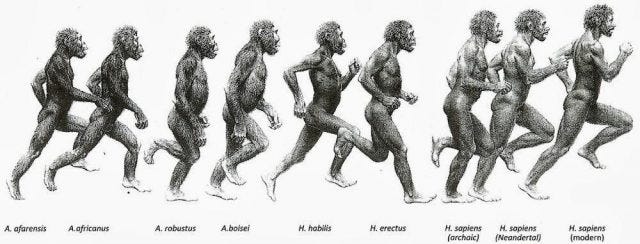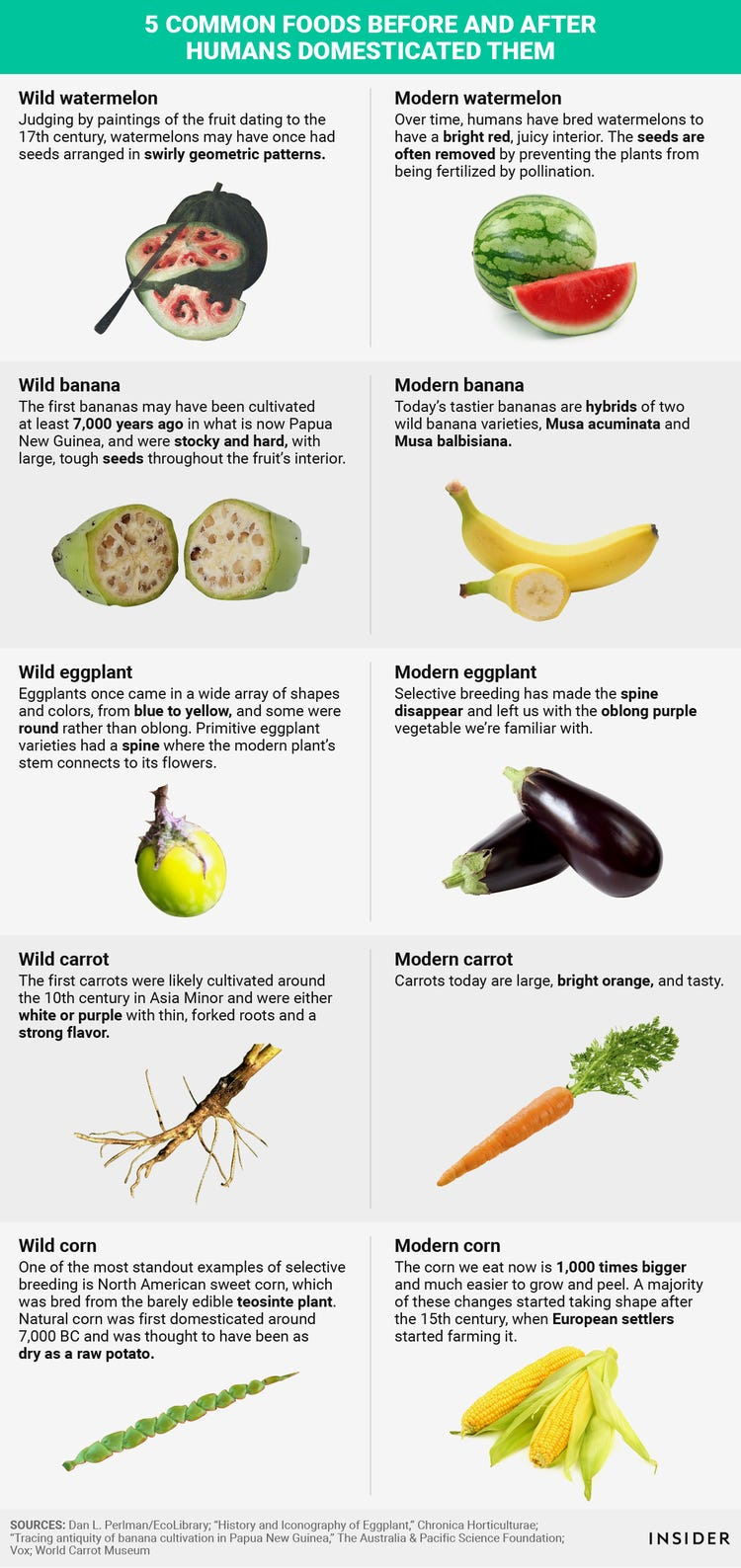Key Questions
What is special about Homo sapiens?
What is our biological niche?
How have our brains evolved in recent history?
Are we still evolving?
Topics Covered
Homo sapiens
Brain Evolution Trends
Agrarian Malnutrition
Rapid Microevolution
Evolutionary Mismatch
Homo sapiens
The ability to throw objects at high speed is unique to our species.
Origins of human throwing unlocked (BBC, June 26, 2013)
We are also geared for incredible endurance.
The Evolution of Endurance (Science.org, Nov 17, 2004)
[Physiologic adaptations may have made humans better runners]
Hunter-Gatherer Niche
Human Adaptability
Homo sapiens has an incredible ability to adapt to its environment. This process can happen rather quickly. I will talk about “microevolutions” further down below.
The Generalist Specialist: Why Homo Sapiens Succeeded (Science.org, July 30, 2018)
Brain Evolution Trends
There are a number of interesting trends with our special brains.
Up until very recently our brains have been rapidly growing in size. There are a few hypotheses and one of them is that we have become domesticated through advanced civilizations. Domestication tends to shrink brain sizes as a by product of individuals being artificially (man-made) chosen for less aggression. Another hypothesis is that our brains are growing more efficient. These 2 hypotheses may have a sort of coinciding reasoning: we are depending more on our social groups and less on individual ability.
Agrarian Malnutrition
It appears the evidence suggest that our transition from foragers to agriculturalists took a toll on our nutrition. This makes sense given that all of our modern crops are significantly different from their ancestors having gone through careful selective breeding.
Early Farmers Were Sicker and Shorter Than Their Forager Ancestors (Discover.org, June 17, 2011)
[This effect was seen over thousands of years, starting at the dawn of agriculture about 10,000 years ago.In more recent times, however, height and health have been increasing, especially in 75 years or so since mechanized agriculture began to spread.]
Rapid Microevolution
It appears that life in general has a very robust ability to adapt. We can see plenty of evidence that evolution can occur in small steps quite rapidly.
Ongoing Human Adaptations
Humans are still evolving: 3 examples of recent adaptations (Inverse.com, Feb 2, 2020)
On average, our bodies are cooling down. Records indicate body temperature declines 0.05 degrees Fahrenheit every decade. A likely explanation is that it is more efficient to produce less heat given our brain’s high demand.
Many populations have specific dietary genes helping them process dairy and plants. FADS2 gene allows people to process omega-3 and omega-6 fatty acids from non-meat sources.
Our bones are becoming lighter since the advent of sedentary agriculturalism. It appears that our daily physical demands have decreased so our bodies have decided to not invest as much in our bones. This of course can be changed with resistance training! Which I will cover in part 2 of this series.
There are definitely more adaptations occurring such as problematic neck posture changes from looking down at phone screens
Evolutionary Mismatch
The problem with today’s society is that we are progressing at a rate much faster than the mechanisms of evolution. This is also evident in our impact on the environment. The rates of climate change have never been so drastic due to our aggressive capacity to burn fossil fuels. This results in a “evolutionary mismatch” where our evolutionary adaptations play to our disadvantage in modern contexts. For example, our primal panic systems are meant to protect us from dangerous animals like bears, but nowadays there aren’t as many mortal dangers in our everyday lives. However, our panic systems can malfunction due to the high stress we can experience in our industrialized lives.
The modern lifestyle is a far cry from our hunter gatherer days and this change only occurred within the last 10,000 years or so. One interesting thing to note is that hunter-gatherers generally spend a lot of time not doing much. It could be argued that our work hours are an unnatural convention, but of course we are adaptable and certainly showing material competence in modern industry.





























